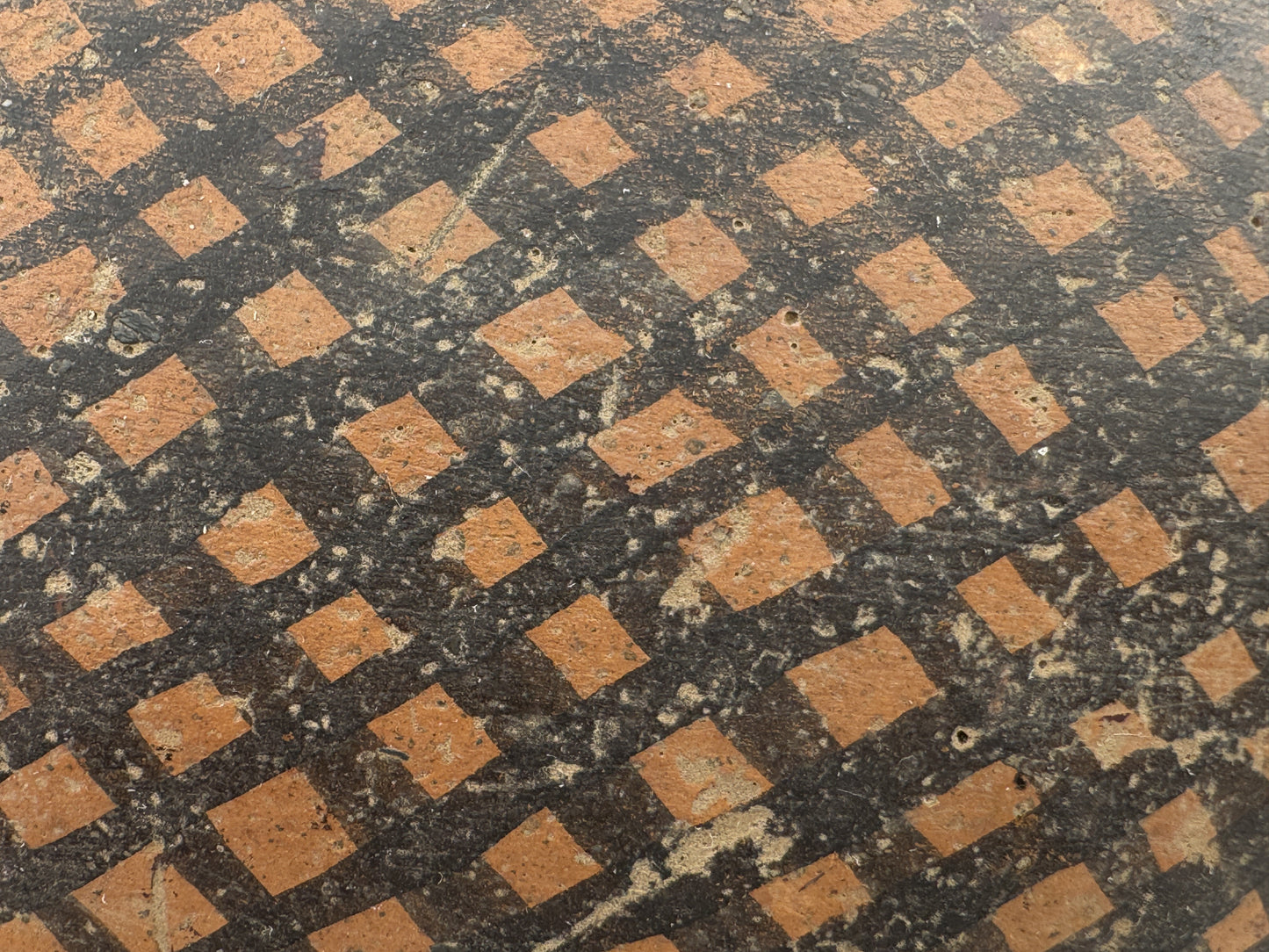Neolithic Pottery Amphora, 3rd-2nd Millenium BC
Neolithic Pottery Amphora, 3rd-2nd Millenium BC
Couldn't load pickup availability
This Neolithic pottery presents a robust form with a rounded bottom, tapering to a wide, open top. It features two small loop handles symmetrically placed on either side. The vessel's surface displays an elaborate pattern created through a technique that may involve incision or impressing before the clay was fired. This pattern consists of a checkerboard motif that wraps around the body, intersected by vertical bands which create a striking contrast to the earthy tones of the clay.
Date : 3,000-2,000 BC
Made in : Hunan province
Dimension : 17cm (Height) x 12cm(Mouth Diameter)
Condition : Good
Provenance : Acquired in late 1990s from Hongkong
* Neolithic pottery
Neolithic pottery from China, dating approximately between 10,000 BCE to 2,000 BCE, is a significant cultural artifact that reflects the rich culture and advanced technology of the region during this era. The pottery found across various regions of China displays unique styles and techniques, indicating a diverse and sophisticated cultural landscape.
During the Neolithic period, pottery in China was predominantly used for agricultural purposes, including storage containers, cooking vessels, and dining utensils. It was common for Neolithic Chinese cultures to decorate pottery with intricate patterns or colors, often reflecting the religious beliefs or life philosophies of the time. For instance, pottery from the Hemudu culture in the Yangtze River basin is known for its black and red patterns, while the Yangshao culture in the Yellow River basin is characterized by its fine linear designs.
The shapes and sizes of Neolithic Chinese pottery varied greatly, influenced by the climate, geography, and natural resources of each region. Some areas prioritized large and heavy storage containers, while others required smaller and more portable bowls for convenience.
Archaeological excavations of this pottery have been crucial in understanding the transition to settled life, the advancement of agricultural techniques, and the complexity of early societies in China. The production techniques and stylistic decorations of the pottery evolved over time, and these variations provide invaluable data for studying the development and cultural exchanges of ancient Chinese societies.
































